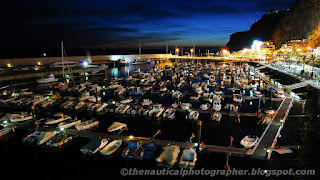I'm getting more and more fond of the Nikon P7100 over time. It's a compact, granted. But it's a serious compact, with complete manual override of its automatic functions. And regardless of what many bloggers might say, I really enjoy the (although small!) optical viewfinder. Adding to so many functions and versatility, you have also the possibility to shoot RAW (NRW) files. Forgetting the small sized sensor and the obvious problems associated with that, this camera is pretty much portable and quite capable of professional results. It's as close as you can get to the Leica M and the "decisive moment" philosophy by a mere 300 bucks.
But it still is a compact. And despite a professional-grade body build, we are limited for all the eternity with a fixed 6-42.6mm f/2.8-5.6 (optically competent, 28-200mm-35mm equivalent, lens). Aware of this limitation, it wouldn't take long for the market to come up with a few solutions to extend its optical versatility.
A kit that is, probably quite popular, is the wide-angle/macro adapter. There are several of these on the market. Nikon, particularly, has its own (the Nikon WC-E75A lens used in conjunction with the UR-E22 adapter ring). But with a price tag of about 200 Euros I started immediately looking for cheaper alternatives. And if you search E-Bay, like I did, you'll probably will find several ones, beginning at 20 or 30 Euros. These kits are basically composed of three pieces: an adapter ring (or extension tube) and two lenses. Well, in a way it's actually a single wide lens that has the ability of being separated in two. To use the kit on its basic wide-angle function, you attach both lenses to the extension tube and all the kit to the camera body (after removing from the body the camera's attachment ring surrounding the lens).
If you want to use this useful accessory as a close-up device, you just separate the lens in two components and attach just its "Macro" lens to the extension tube. And voilá... you have two useful lenses in one.
The typical wide-angle and macro lens adapter kit that you can buy on the E-Bay, made by several independent makers, is normally composed of these items: an extension tube (used to connect the lenses to the camera body) and the optical kit, generally composed of two screw-down lenses. To use the kit as a wide-angle adapter both lenses have to be connected together. But if you unscrew the wide-angle front element, you can use the Macro one as a close-up accessory. Two lenses in one. Not bad for 30 Euros.
Just pay attention to one detail: not all the independent extension tubes on the market are a perfect copy of the original Nikon UR-E22. Meaning that the original Nikon accessory has two "dents" that interact with the camera body and blocks the zoom lens to extend more than its 28mm position (the shorter length), thus preventing serious damage to the lens if you zoom it with the accessory lens mounted on the body.
All these wide-angle kits that you can buy are to be used with the zoom in its minimum position. Naturally. However, if you are buying an independent one (as I did), just make sure that, after being installed on the camera body, the extension tube interacts with the camera's electronics and doesn't allow the zoom range to extend. It's easy to test that. Just install the extension tube on the camera (without the front lens) and try to zoom afterwards. If the lens doesn't respond, it means that you bought a "safer" kit. And therefore you are protected from a serious damage if, by mistake, you operate the zoom lever when using the kit lens.
You can, also, always go to the camera's menu and switch on the "wide-angle converter connected" mode. That way, you will be protected no matter what. Just don't forget to switch it off after removing the kit lens, or you'll go mad trying to understand "why doesn't the bloody camera zoom? It was working perfectly until a few hours ago!".
Without the wide-angle lens...























